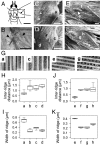Moths produce extremely quiet ultrasonic courtship songs by rubbing specialized scales
- PMID: 18695227
- PMCID: PMC2575327
- DOI: 10.1073/pnas.0804056105
Moths produce extremely quiet ultrasonic courtship songs by rubbing specialized scales
Abstract
Insects have evolved a marked diversity of mechanisms to produce loud conspicuous sounds for efficient communication. However, the risk of eavesdropping by competitors and predators is high. Here, we describe a mechanism for producing extremely low-intensity ultrasonic songs (46 dB sound pressure level at 1 cm) adapted for private sexual communication in the Asian corn borer moth, Ostrinia furnacalis. During courtship, the male rubs specialized scales on the wing against those on the thorax to produce the songs, with the wing membrane underlying the scales possibly acting as a sound resonator. The male's song suppresses the escape behavior of the female, thereby increasing his mating success. Our discovery of extremely low-intensity ultrasonic communication may point to a whole undiscovered world of private communication, using "quiet" ultrasound.
Conflict of interest statement
The authors declare no conflict of interest.
Figures




Similar articles
-
Private ultrasonic whispering in moths.Commun Integr Biol. 2009 Mar;2(2):123-6. doi: 10.4161/cib.7738. Commun Integr Biol. 2009. PMID: 20835290 Free PMC article.
-
Moths are not silent, but whisper ultrasonic courtship songs.J Exp Biol. 2009 Dec;212(Pt 24):4072-8. doi: 10.1242/jeb.032466. J Exp Biol. 2009. PMID: 19946086
-
Variation in courtship ultrasounds of three Ostrinia moths with different sex pheromones.PLoS One. 2010 Oct 4;5(10):e13144. doi: 10.1371/journal.pone.0013144. PLoS One. 2010. PMID: 20957230 Free PMC article.
-
Moth hearing and sound communication.J Comp Physiol A Neuroethol Sens Neural Behav Physiol. 2015 Jan;201(1):111-21. doi: 10.1007/s00359-014-0945-8. Epub 2014 Sep 27. J Comp Physiol A Neuroethol Sens Neural Behav Physiol. 2015. PMID: 25261361 Review.
-
Courtship song analysis of Drosophila muscle mutants.Methods. 2012 Jan;56(1):87-94. doi: 10.1016/j.ymeth.2011.09.007. Epub 2011 Sep 16. Methods. 2012. PMID: 21945578 Review.
Cited by
-
Male- and Female-Biased Gene Expression of Olfactory-Related Genes in the Antennae of Asian Corn Borer, Ostrinia furnacalis (Guenée) (Lepidoptera: Crambidae).PLoS One. 2015 Jun 10;10(6):e0128550. doi: 10.1371/journal.pone.0128550. eCollection 2015. PLoS One. 2015. PMID: 26062030 Free PMC article.
-
Early erratic flight response of the lucerne moth to the quiet echolocation calls of distant bats.PLoS One. 2018 Aug 20;13(8):e0202679. doi: 10.1371/journal.pone.0202679. eCollection 2018. PLoS One. 2018. PMID: 30125318 Free PMC article.
-
Tympanal ears mediate male-male competition, courtship and mating success in Bicyclus anynana butterflies.R Soc Open Sci. 2024 Mar 27;11(3):231386. doi: 10.1098/rsos.231386. eCollection 2024 Mar. R Soc Open Sci. 2024. PMID: 38545613 Free PMC article.
-
Evolution of deceptive and true courtship songs in moths.Sci Rep. 2013;3:2003. doi: 10.1038/srep02003. Sci Rep. 2013. PMID: 23788180 Free PMC article.
-
Auditory sensitivity and ecological relevance: the functional audiogram as modelled by the bat detecting moth ear.J Comp Physiol A Neuroethol Sens Neural Behav Physiol. 2010 Jul;196(7):453-62. doi: 10.1007/s00359-010-0529-1. Epub 2010 May 7. J Comp Physiol A Neuroethol Sens Neural Behav Physiol. 2010. PMID: 20449595
References
-
- Greenfield MD. Signalers and Receivers: Mechanisms and Evolution of Arthropod Communication. New York: Oxford Univ Press; 2002.
-
- Zuk M, Kolluru GR. Exploitation of sexual signals by predators and parasitoids. Q Rev Biol. 1998;73:415–438.
-
- Belwood JJ, Morris GK. Bat predation and its influence on calling behavior in Neotropical katydid. Science. 1987;238:64–67. - PubMed
-
- Hunt J, et al. High-quality male field crickets invest heavily in sexual display but die young. Nature. 2004;432:1024–1027. - PubMed
-
- Jia F-Y, Greenfield MD, Collins RD. Ultrasonic signal competition between male wax moths. J Insect Behav. 2001;14:19–33.
Publication types
MeSH terms
LinkOut - more resources
Full Text Sources
Other Literature Sources
Miscellaneous

